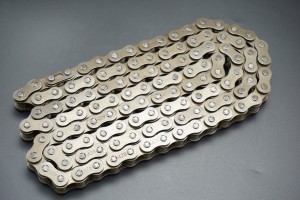Roller chains are ubiquitous components in a variety of industries, from manufacturing equipment to bicycles and motorcycles. While their importance cannot be overemphasized, many people remain unaware of the complex processes involved in creating these vital mechanisms. In this blog, we delve into the fascinating world of roller chain manufacturing, exploring the meticulous steps involved in transforming raw materials into precision chains.
1. Raw material selection:
The process begins with the careful selection of high-quality steel or stainless steel as the main raw material. These materials were chosen for their high tensile strength, durability and corrosion resistance – key factors when dealing with outdoor applications.
2. Drawing:
Selected steel or stainless steel undergoes wire drawing, a process that draws the material through a series of dies to reduce its diameter while increasing its length. This created the consistent and malleable wire that would later become the basis of roller chain construction.
3. Cold forging:
Next, the wire is cold forged to form a round, solid pin that represents the core structural component of the roller chain. The cold forging process ensures that the pins have the required hardness and design specifications for optimum performance under heavy loads and harsh environments.
4. Drum production:
Simultaneously, cylindrical metal rods are cut to precise lengths and then milled to form the rollers. Milled surfaces are carefully ground to ensure smooth operation and minimize friction, increasing the overall efficiency and service life of the roller chain.
5. Stamping of side panels:
The stamped side plates that house the pins and rollers are then made from mild steel. These plates are precisely formed to contain the necessary holes and slots to accommodate the pins and connect the chain together.
6. Assembly:
Once the individual parts are ready, the assembly process begins. Place the pins in the corresponding holes on one side plate, then add the precisely positioned rollers. The other side panel is then aligned and pressed into place to form a complete interlocking chain.
7. Heat treatment:
To enhance roller chain strength and ensure longevity, fully assembled chains are heat treated. The process involves exposing the chain to high temperatures, followed by rapid cooling. Heat treatment significantly increases the wear resistance, fatigue resistance and overall durability of the chain.
8. Surface treatment:
Depending on application requirements, roller chains may undergo additional surface treatment processes. These treatments, such as nickel plating or blackening, can provide additional protection against corrosion or improve the aesthetics of the chain.
9. Quality control:
Before roller chains are packaged and ready for distribution, they undergo stringent quality control measures. These evaluations include dimensional accuracy checks, destructive load testing, and inspection for any surface imperfections. This stringent quality control process ensures that only top-notch roller chains enter the market.
The manufacturing process of roller chains is a harmonious blend of precision engineering, cutting-edge technology and skilled craftsmanship. From initial raw material selection to final quality inspection, every step plays an important role in producing reliable and efficient roller chains.
Whether we realize it or not, roller chains shape the seamless motion of countless machines, engines and vehicles. Familiarity with the complex production processes behind these mechanical marvels has given us new insight into the engineering marvels that effectively power and power the industries we depend on.
Post time: Jul-13-2023

